Palaces and Parks of Potsdam and Berlin: Sanssouci Palace is the most famous palace of the palaces of Potsdam and Berlin. Sanssouci Palace and its park are situated just outside Potsdam. Potsdam is located about 24 km from Berlin, the capital city of Germany. Sanssouci Palace was built for King Frederick the Great in the period 1745 -1747. The design of Sanssouci was based on sketches made by Frederick the Great himself. Sanssouci is often considered the German rival to Versailles, but it is far smaller. The palace is only one storey high and has only twelve rooms. The Marmorsaal is loosely based on the Pantheon in Rome. Sanssouci Palace was the summer residence and favourite palace of King Frederick the Great. Over the years, several other buildings were built in Sanssouci Park, such as the New Palace and Chinese House. The park around Sanssouci contains many statues, follies and fountains, such as the Great Fountain in front of Sanssouci Palace. King Frederick the Great died in Sanssouci Palace in 1786. The king desired to be buried in a grave on the vineyard terrace near Sanssouci Palace. Even in death he wanted to be near Sanssouci. His last wish was finally fulfilled in 1991. Besides the Palaces and Parks of Potsdam and Berlin, there are another two UNESCO World Heritage Monuments in Berlin: Berlin Modernism Housing Estates and Museumsinsel (Museum Island), Berlin. The Palaces and Parks of Potsdam and Berlin were declared a UNESCO World Heritage in 1990.
www.werelderfgoedfotos.nl © Copyright World Heritage Photos Classic Car Road Trip
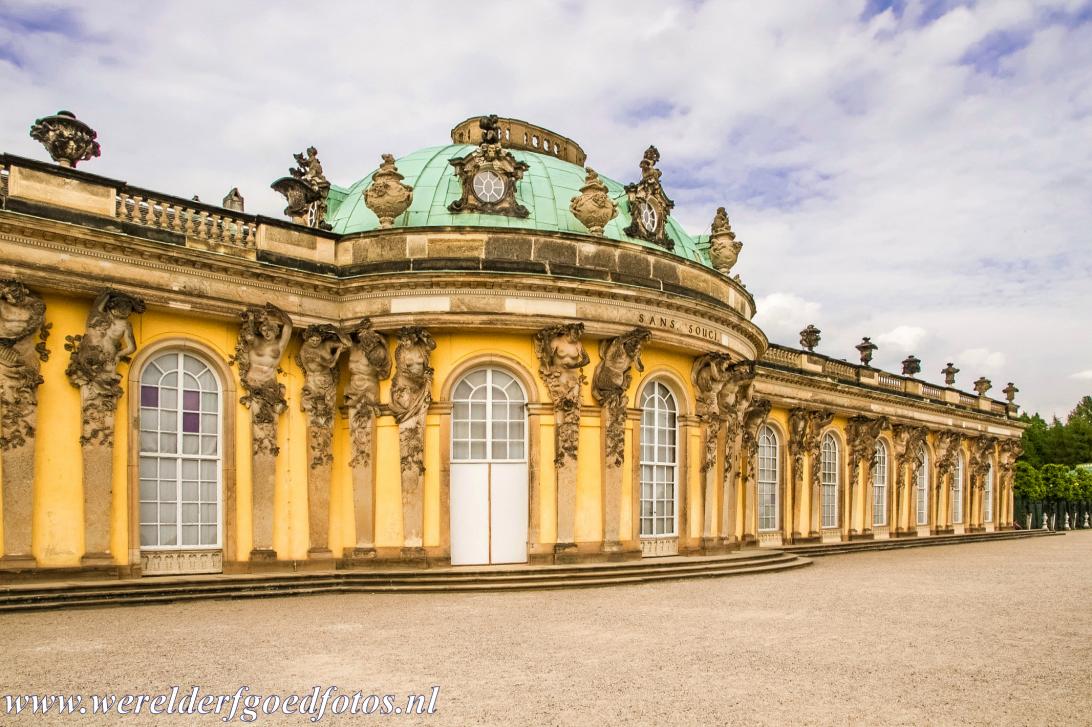
The design of Sanssouci was based on sketches created by King Frederick the Great. Sanssouci Palace is often considered the German rival to Versailles, but it is far smaller. The palace is only one storey high and has only twelve rooms. Sanssouci was the favourite palace of Frederick the Great. Sanssouci gained the status as a UNESCO World Heritage in 1990 as part of the UNESCO World Heritage: Palaces and Parks of Potsdam and Berlin.

The design of Sanssouci was based on sketches created by King Frederick the Great. Sanssouci Palace is often considered the German rival to Versailles, but it is far smaller. The palace is only one storey high and has only twelve rooms. Sanssouci was the favourite palace of Frederick the Great. Sanssouci gained the status as a UNESCO World Heritage in 1990 as part of the UNESCO World Heritage: Palaces and Parks of Potsdam and Berlin.
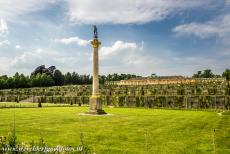
Palaces and Parks of Potsdam and Berlin: A column with statue in front of Sanssouci Palace and the terraced gardens. Sanssouci Palace is situated in Sanssouci Park in Potsdam. Sanssouci Park is an ensemble of palaces and gardens, built under Frederick the Great during the 18th century. Sanssouci is the main focus of the palaces and parks of Potsdam and Berlin, Sanssouci was the summer residence of King Friedrich II of Prussia, also known as Frederick the Great.
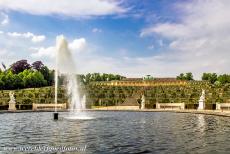
Palaces and Parks of Potsdam and Berlin: The Great Fountain in front of Sanssouci Palace. The Great Fountain was built in 1748, it rises to a height of 38 metres. Sanssouci Palace is located in Potsdam. Sanssouci was built for King Frederick the Great in the period 1745 -1747. Sanssouci Palace is renowned for its blend of French and Italian Rococo styles. Sanssouci Palace is part of the UNESCO World Heritage: Palaces and Parks of Potsdam and Berlin.
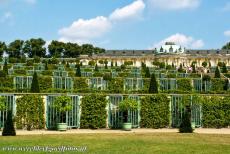
Palaces and Parks of Potsdam and Berlin: The vineyard terraces in front of Sanssouci Palace in Potsdam. Frederick the Great ordered the establishment of a vegetable and a fruit garden. The gardens and the greenhouses were planted with more than 3,000 fruit trees such as bananas, oranges and peaches. Frederick the Great called Sanssouci 'mein Weinberghäuschen', my little vineyard house. The park around Sanssouci contains many statues, follies and fountains.
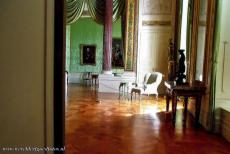
Palaces and Parks of Potsdam and Berlin: Frederick the Great died in this armchair in the study of his beloved Sanssouci Palace in Potsdam. Sanssouci was his favourite palace and his private refuge. The design of Sanssouci was based on sketches made by Frederick the Great himself, he did not accept any suggestions for changing his plans. The king wanted a small palace for living that he could enter directly from the gardens. After WWII, Sanssouci became a tourist attraction.
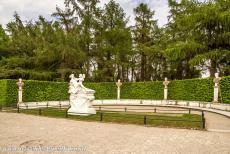
Palaces and Parks of Potsdam and Berlin: The final resting place of King Frederick the Great in the forecourt of Sanssouci Palace in Potsdam. King Frederick the Great wished to be buried in a tomb next to Sanssouci Palace and next to his favourite dogs. Some visitors left potatoes on his tomb. During a famine, Frederick the Great offered free potatoes to his farmers and he ordered a national cultivation programme, because he saw potatoes potential to help feed his nation.
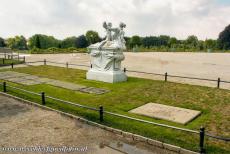
Palaces and Parks of Potsdam and Berlin: The tomb of Frederick the Great on the uppermost vineyard terrace in Sanssouci Park in Potsdam. Frederick the Great wished to be buried next to his dogs and next to Sanssouci Palace. His successors did not fulfill his final wish, he was buried next to his father in the Potsdam Garrison Church. His final wish was fulfilled in 1991, 205 years after his death. The sarcophagus of the king was interred in the forecourt of Sanssouci Palace.
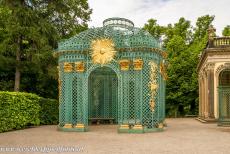
Palaces and Parks of Potsdam and Berlin: A trellis gazebo next to Sanssouci Palace. There are two free-standing trellised gazebos, embellished with gilded ornaments. The palaces in Potsdam with its beautiful parks were the favourite residences of the German Imperial family until the fall of the Hohenzollern Dynasty in 1918, immediately after World War I. Wilhelm II, the last German Emperor fled to the Netherlands where he spent the last years of his life in exile.
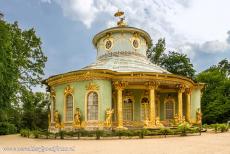
Palaces and Parks of Potsdam and Berlin: The Chinese House is a garden pavilion in Potsdam, it was built from 1754-1757. The pavilion is an important example of the 18th century Chinoiserie, this style is a mix of Western and Oriental architecture, the Chinese House lies in Sanssouci Park not far from Sanssouci Palace and the Neues Palais. It houses Meissen and Asian porcelain. The Chinese House is part of the UNESCO World Heritage: Palaces and Parks of Potsdam and Berlin.
